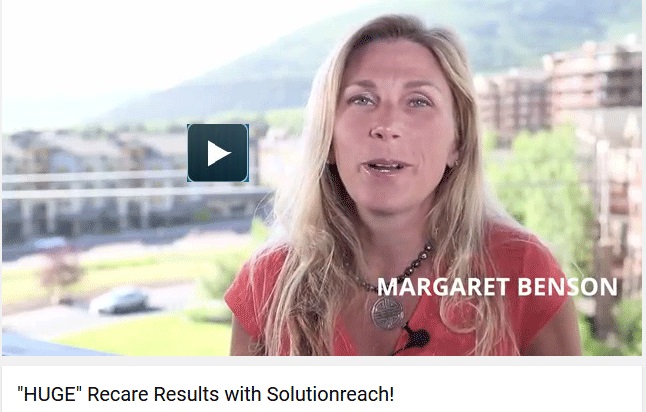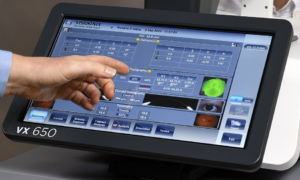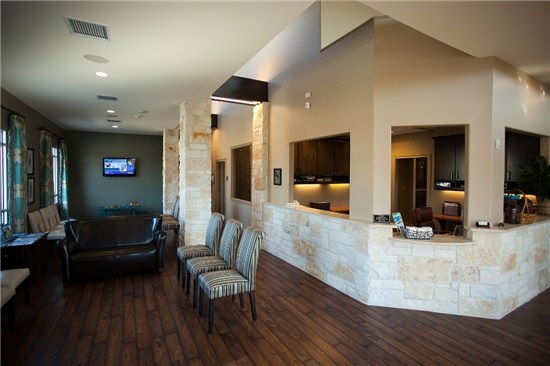
The reception area in Peter J. Cass’s, OD, practice. Dr. Cass says automated recall saves staff time, and is more effective than manual recall through phone calls and postal mail.
Sponsored Content
April 5, 2017
By ROB Editors
Peter J. Cass, OD, the owner of Beaumont Family Eye Care in Beaumont, Texas, used postcards sent via postal mail for years to recall patients. But six years ago, he decided to take his practice’s recall to the next level by using an automated system from Solutionreach.
“As the practice grew, the staff was spending more and more time creating these postcards, and we realized that we were basically devoting the equivalent of a part-time position to the tasks of recall and reminders,” says Dr. Cass. “I knew there had to be a more efficient way to utilize technology.”
Prior to implementing Solutionreach the practice’s no-show and reschedule rate was around 26 percent, but he saw a dramatic decrease in the number of no-shows (dropping to below 10 percent), and he appreciated not having to deal with postcards that were returned because of a bad address. What’s more, with this kind of automated system, it is much easier to track no-show rates.
The implementation of Solutionreach coincided with another big practice change–the move to a new office. Having an automated recall and patient communication system enabled Dr. Cass and his staff to keep patients apprised, and excited, about these changes. “We moved at the same time we switched to Solutionreach, and felt that we needed the additional marketing edge it would give us. It made a huge difference, as we saw our practice grow by 35 percent within the first year, in both exams and revenues,” he says.
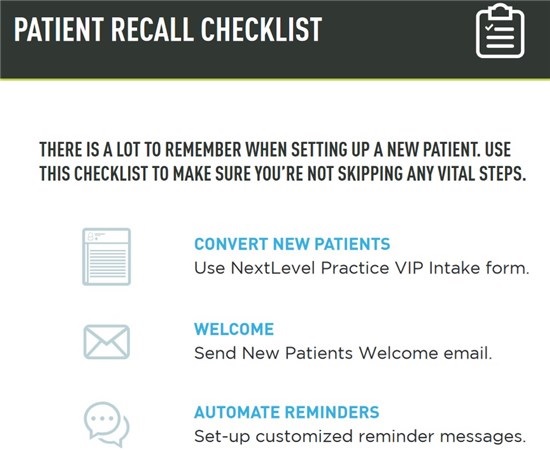
A Solutionreach checklist of tasks to be done when acquiring a new patient. Dr. Cass says use of this technology enables him to do all these things, and for less expense and time than was required recalling patients by phone and postal mail.
Calculate ROI
Solutionreach runs about $400 per month, but the savings on postcards and postage more than justifies the cost. Postage is 49 cents for letters and 35 cents for postcards. You could send out 1,000 letters for $490, or postcards for $350, but that does not include the cost of materials, printing, or staff time.
“When we consider the increase in staff productivity, the increase in recall scheduling, the decreased waste of staff time, and the decreased no-show rate, the cost of the automated recall more than pays for itself,” says Dr. Cass.
According to the Management & Business Academy, the cost of one empty chair is $306. If automated recall saves you 16 appointments/year, it pays for itself.
How Does the Technology Work?
The technology is a Software As a Service (SAS), which runs on the server at Dr. Cass’s office. It connects to the database in the practice’s EHR and looks for patients who have not had an appointment in a specified time frame (one year in the case of Dr. Cass’s office), or upcoming patient appointments in a specified time frame (one week and one day for Dr. Cass’s office).
The software sends reminders to patients who are due for an appointment, to contact the practice to schedule an appointment, and to those who have upcoming appointments to confirm that they will make their appointment.
“The best part is that the staff doesn’t have to do anything,” says Dr. Cass. “This really freed up time for the staff, and we have redirected that time for tasks that improve patient service.”
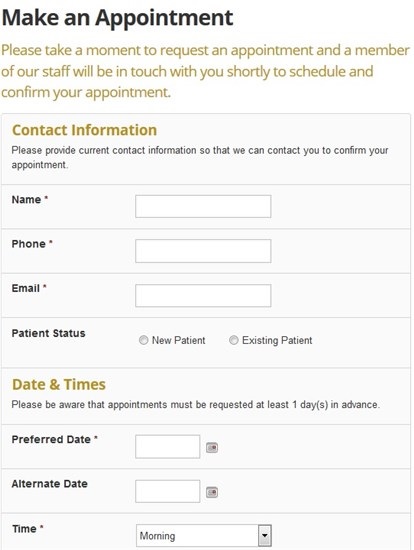
The page on Dr. Cass’s web site that easily allows patients to make an appointment online. Dr. Cass says that, along with his automated recall that reminds patients by phone and e-mail of their appointments, patients are given an easy way to both make–and remember–their appointments.
How Do Patients Interact with the Technology?
Dr. Cass says the technology is very intuitive for patients. If they need to schedule an appointment, the software will continue to remind them (by text) to contact the practice and schedule an appointment. Once they do, it will stop contacting them.
The number of reminders can be set depending on the office preference (Dr. Cass’s practice sets it at three times). If patients have an upcoming appointment, it will text them a reminder (the lead time for the reminder can be set based on practice preference). Patients can simply reply to the text with a “yes” or “no” to confirm or cancel their appointment.
“I initially thought that patients might be frustrated by receiving a text,” Dr. Cass explains. “But in five years, we have only had a handful of patients ask us to remove them from the service, and only one or two who got upset about receiving a text. The service can also automatically call any patients who do not respond to a text. Patients are able to opt out at any time, but we have a very small number who do so because text messaging is the way that virtually everyone communicates.”
Use the Technology for Marketing, Too
Solutionreach’s software also texts patients with a happy birthday message on their birthday, which Dr. Cass says his practice has received a lot of positive feedback about. “Another feature that has been a real practice builder for us are automated surveys,” he says. “The software automatically sends these out after every appointment, and we use the feedback to help improve our patient service and to build a great online reputation (Google us and see!).”
Click HERE for more information about Solutionreach, and what it can do for your practice.
Patient Management With Solutionreach
Peter J. Cass, OD, is the owner of Beaumont Family Eye Care in Beaumont, Texas, and president of the Texas Optometric Association. To contact: pcassod@gmail.com

